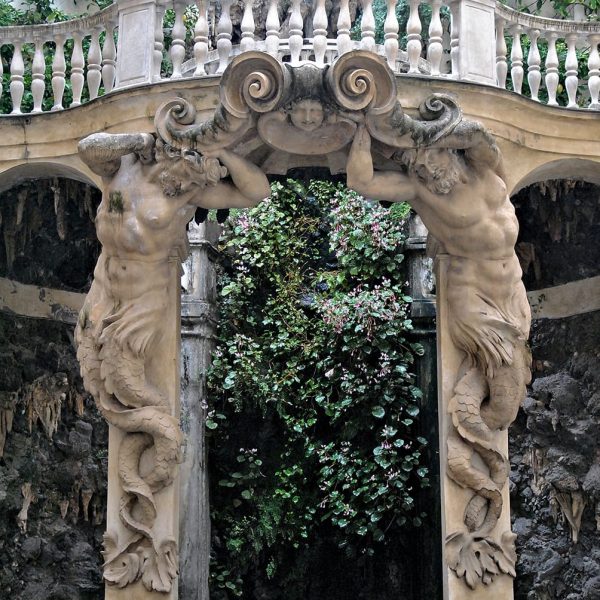
13. Palace of Gio Battista Spinola
25 March 2022
15. Palace of Lazzaro and Giacomo Spinola
25 March 2022The solemn entries of Charles V into the Italian cities had promoted the flourishing industry of celebrating arrays by inciting artists and clients to the taste of ephemeral arts.
There remained a diffused desire for exterior scenes which had found glorification in Genoa in the painted fa¸ades decorated in stuccoes.
A remarkable example is this Podestà palace, fourth on the uphill side, founded in 1563 by Nicolosio Lomellino of the great family arrived in the second half of 1500 at the height of its political and financial splendour, celebrated through suitable investments, among them the big church of the new Annunziata for the Franciscan Friars.
The most illustrious Nicolosio up to date with cultural fashions, preferred the more extravagant and transgressive mannerist decoration, so much that he ordered or authorized from the architect painter Bergamasco a façade with a stucco surface in three superimposed orders all figured.
Castello drew large, soft modelled, winged herms on the ground floor, trophies hanging from ribbons and drapes on the first floor and on the second garlands in the interaxis spaces; five masks fitted in the tympana of the sixteenth century windows vary from human typology to beastly grimace in a sequence of eloquent metamorphosis of obvious theatrical and philosophic ascendancy. Also the beautiful oval entrance-hall is a small scenic space with walls decorated with exedras enclosed between pilaster strip-herms and in the vaults illustrated medallions and frames with puttoes and garlands, all figured in the soft and bright mixture of the plaster.
Beyond the entrance-hall, the sinuous scenery of a grotto could already be visible and, though realized two centuries after by Domenico Parodi, it broadens the theatrical suggestion until the courtyard.
This palace too, on the uphill side, connected the “piano nobile” to the embankment of the garden, the only one still conserving its function, hanging over a tunnel jammed with urban traffic. The property passed on already at the beginning of 1600 to Luigi Centurione and for one and half centuries belonged to this family which provided for a partial interior restoration which respected, by enhancing it, the relationship of the building with its open spaces.
The decoration is late, all on the baroque and neoclassical side, and once more the result of the collaboration of Genoese and Bolognese artists.
The abbot Lorenzo de Ferrari was the author of the fleshy stuccoes and the tender skies painted in fresco in the gallery.
Two drawing-rooms of the piano nobile saw the competition between Giacomo Antonio Boni and Domenico Parodi with mythological subjects in Arcadian fashion: Jupiter and the Goat Amaltea and Baccus and Ariadne. Another bucolic subject, but kept in a soft neoclassical clearness, animated the great wall canvases by the Bolognese Marcantonio Franceschini with Stories of Diana which gave credit to this dwelling.
- PH: LZeppa
- PH: LZeppa
- PH: Pal Lomellino








